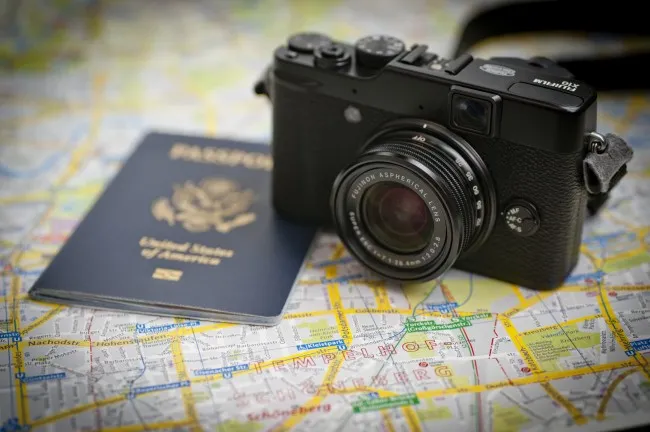
-
The referenced media source is missing and needs to be re-embedded.Photo by Kelly Gorham/Montana State University
By Kelly Gorham, Montana State University
The first camera I ever got to play with was my father’s Regula Werk King that he purchased while serving in the Army in Germany. It now sits on a shelf in my living room and over the past several years I glanced at it and longingly wished I could have a digital version of a camera like that. Yes, of course there are the Leica’s but…well, we’ll discuss my bank account another time.
Along comes the Fuji X100. On the surface it was exactly what I’d dreamed of, classic styling and high-resolution images. However, it wasn’t perfect, and if I’m going to spend over $1,000 I want what I want. I waited patiently until the arrival last fall of the Fuji X10. Compact, retro, and cheap, this is what I’ve been dreaming of. I put my name on a list and received my X10 in a glossy, black box one day this winter.
-
The referenced media source is missing and needs to be re-embedded.Photo by Kelly Gorham/Montana State University
As a Nikon shooter I did have a bit of a learning curve while learning the X10. With some practice use of the X10 became second nature to me and I’ve had the opportunity to put it through its paces the past few months. I love using the wrong tool for the job so one of the first things I did was attached a Pocket Wizard transmitter to the X10 and do some studio photos of an apple. I was then able to take the X10 with me while on assignment in Washington D.C. It proved to be a wonderful travel camera.
-
The referenced media source is missing and needs to be re-embedded.The Lincoln Memorial - Photo by Kelly Gorham/Montana State University
The 28-110 zoom range and f2.0 lens satisfied most of my needs and its compact enough to carry in a pocket. There are several options for shooting photos ranging from the rangefinder window to live view. I dislike live view and would prefer to save batteries so I stick with the viewfinder. This is a true rangefinder, meaning, what you see is not what you get. You actually get to think like a photographer again, for those who are old enough to remember rangefinders, view cameras and the like.
The X10 does a great job up to iso 400. Pictures are a bit grainy after that. I’ve already run some of the photos in our university publications and they held up just fine. Would I take it on a crucial commercial or editorial assignment? Doubtful, but it’s perfect for when I want to travel light and still get photos that are publishable and my experiments prove that I can connect this camera to whatever lighting system I like or just shoot au natural.
-
The referenced media source is missing and needs to be re-embedded.Photo by Kelly Gorham/Montana State University
Another wonderful feature is the silent shutter. You can turn on some artificial sounds but I love how quiet it is. I even tucked it under my shirt with the lens peeking out between the buttons to take photos in the Library of Congress while standing in between the tour guide and the “no photos allowed” sign.
So, if you’ve been looking for a retro, compact camera with enough poop to publish or print then I recommend you take a look at the Fuji X10. For less than $800 it’s plenty fun, functional and discreet.
-
The referenced media source is missing and needs to be re-embedded.Photo by Kelly Gorham/ Montanta State Unviersity